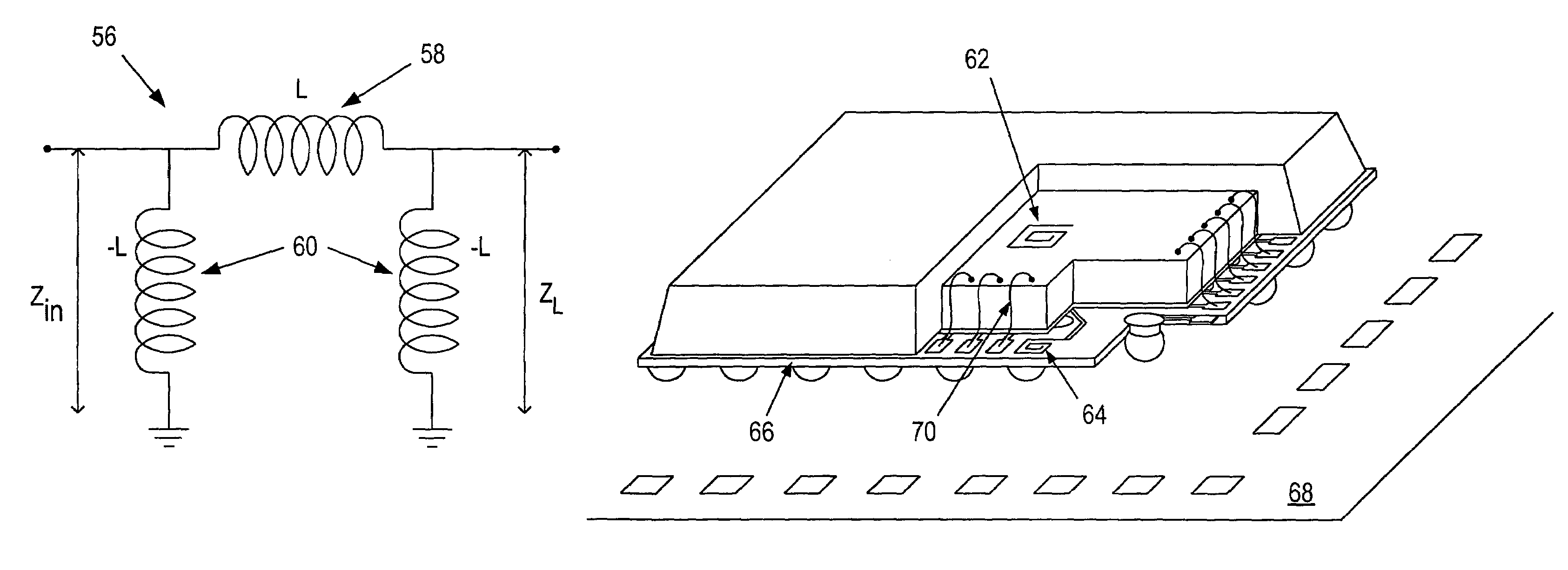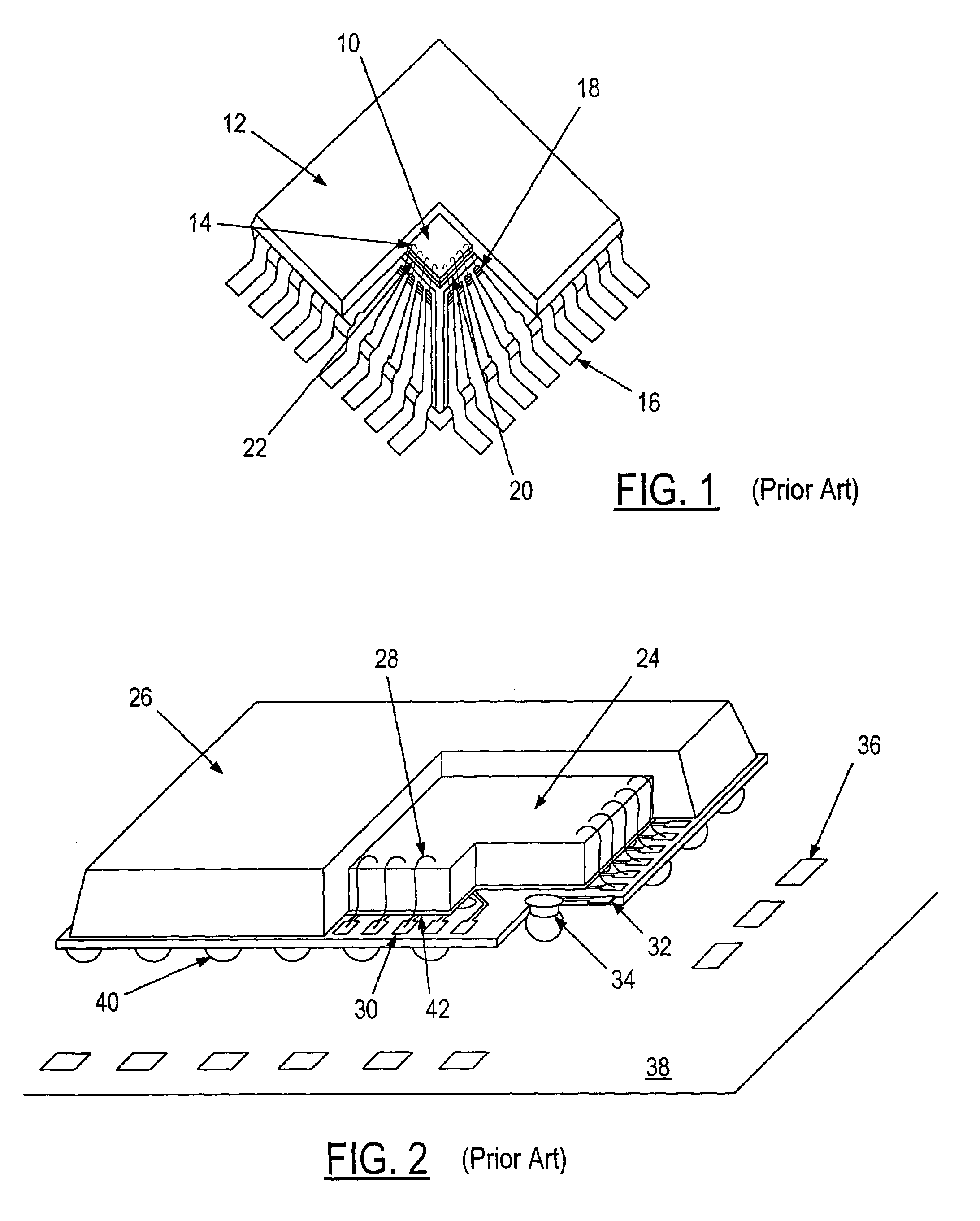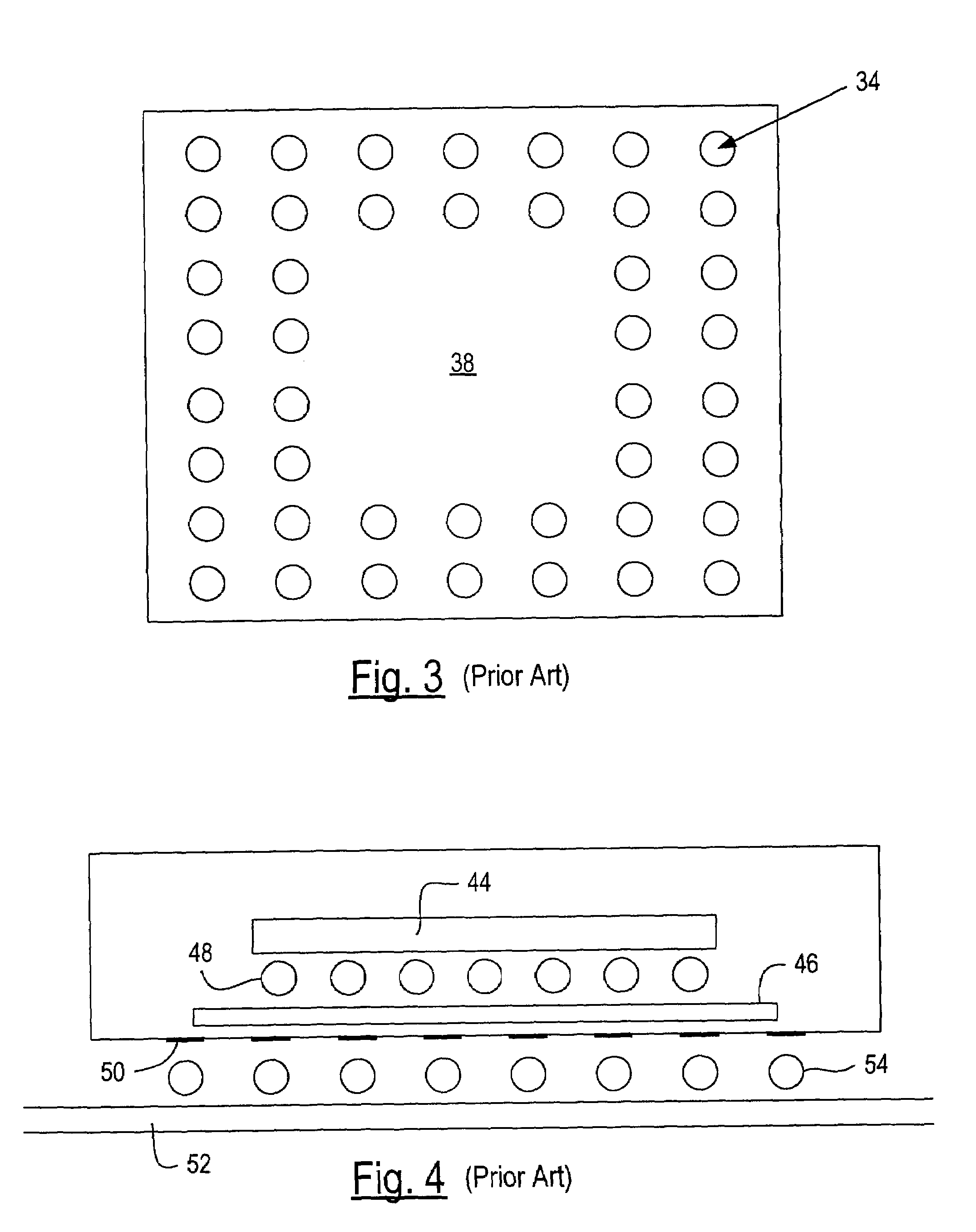Integrated circuit incorporating wire bond inductance
a wire bond and integrated circuit technology, applied in the field of electromechanical devices, can solve the problems of small inductance generation, unsuitable application techniques, and unpredictable inductan
- Summary
- Abstract
- Description
- Claims
- Application Information
AI Technical Summary
Benefits of technology
Problems solved by technology
Method used
Image
Examples
Embodiment Construction
[0023]In essence, the invention takes advantage of a physical property of a wire bond which had previously been considered undesirable. As a result of the advancement of manufacturing techniques the bond wires and ribbons can be made of a consistent length and bonded to electrical contacts on the package with sufficient precision to ensure that the inductance associated with the wire bond is predictable and therefore useable.
[0024]FIG. 5 depicts a lumped element impedance inverter 56. As those skilled in the art will appreciate, impedance is the total opposition to the flow of alternating current in a circuit that contains resistance and reactance. In the case of pure inductance, inductive reactance is the total opposition to the flow of current through it. An impedance inverter serves to transform a low output impedance to a high output impedance. As shown in the figure, the lumped element impedance inverter 56 consists of a series (positive) inductor 58 (also labelled “L”) and two...
PUM
 Login to View More
Login to View More Abstract
Description
Claims
Application Information
 Login to View More
Login to View More - R&D
- Intellectual Property
- Life Sciences
- Materials
- Tech Scout
- Unparalleled Data Quality
- Higher Quality Content
- 60% Fewer Hallucinations
Browse by: Latest US Patents, China's latest patents, Technical Efficacy Thesaurus, Application Domain, Technology Topic, Popular Technical Reports.
© 2025 PatSnap. All rights reserved.Legal|Privacy policy|Modern Slavery Act Transparency Statement|Sitemap|About US| Contact US: help@patsnap.com



